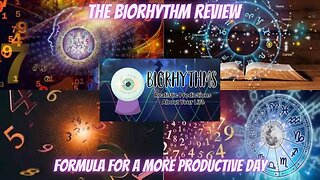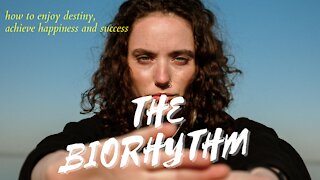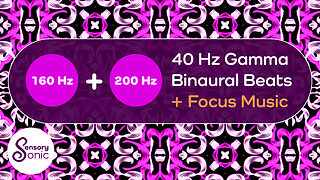the biorhythm Reviews - the biorhythm Review - what is the biorhythm ?
the biorhythm Reviews - the biorhythm Review - what is the biorhythm ?
OFFICIAL WEBSITE ; https://bit.ly/officialthebiorhythm
OFFICIAL WEBSITE ; https://bit.ly/officialthebiorhythm
#numerology #astrology #brainpower
The biorhythm theory is the pseudoscientific idea that peoples' daily lives are significantly affected by rhythmic cycles with periods of exactly 23, 28 and 33 days,[1][2][3] typically a 23-day physical cycle, a 28-day emotional cycle, and a 33-day intellectual cycle. The idea was developed by Wilhelm Fliess in the late 19th century, and was popularized in the United States in the late 1970s. The proposal has been independently tested and, consistently, no validity for it has been found.
Basic rhythm details
Physical cycle
23 days – Circavigintan
coordination
strength
well-being
Emotional cycle
28 days – Circatrigintan
creativity
sensitivity
mood
perception
awareness
Intellectual cycle
33 days – Circatrigintan
alertness
analytical functioning
logical analysis
memory or recall
communication
Biorhythm Chart
The Biorhythm Chart when a person was born.[4]
According to the theory of biorhythms, a person's life is influenced by rhythmic biological cycles that affect his or her ability in various domains, such as mental, physical, and emotional activity. These cycles begin at birth and oscillate in a steady (sine wave) fashion throughout life, and by modeling them mathematically, it is suggested that a person's level of ability in each of these domains can be predicted from day to day. The theory is built on the idea that the biofeedback chemical and hormonal secretion functions within the body could show a sinusoidal behavior over time.
Most biorhythm models use three cycles: a 23-day physical cycle, a 28-day emotional cycle, and a 33-day intellectual cycle.[5] Although the 28-day cycle is the same length as the average woman's menstrual cycle and was originally described as a "female" cycle (see below), the two are not necessarily in synchronization. Each of these cycles varies between high and low extremes sinusoidally, with days where the cycle crosses the zero line described as "critical days" of greater risk or uncertainty.
The numbers from +100% (maximum) to -100% (minimum) indicate where on each cycle the rhythms are on a particular day. In general, a rhythm at 0% is crossing the midpoint and is thought to have no real impact on one's life, whereas a rhythm at +100% (at the peak of that cycle) would give one an edge in that area, and a rhythm at -100% (at the bottom of that cycle) would make life more difficult in that area. There is no particular meaning to a day on which one's rhythms are all high or all low, except the obvious benefits or hindrances that these rare extremes are thought to have on one's life.
In addition to the three popular cycles, various other cycles have been proposed, based on linear combination of the three, or on longer or shorter rhythms.
-
 1:08:38
1:08:38
Musicas para relaxamento espiritual, Mantras, Musicas Espirituais, Musicas Xamanicas, Musicas para Meditar, Musicas reiki, Indianas, Musicas para Dormir
1 year agothebiorhythm Review-thebiorhythm Reviews- the biorhythm does it work ?
20 -
 1:08:42
1:08:42
JOHNKEMBER
3 years agoThe Biorhythm - How To Enjoy Life, Success and Anticipate Destiny
61 -
 29:59
29:59
Sensory Sonic
6 months ago40 Hz Gamma Binaural Beats With Hypnotic Focus Music | Ideal For Study & Work Productivity
1.15K